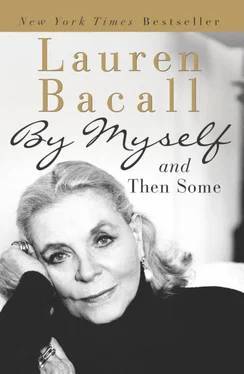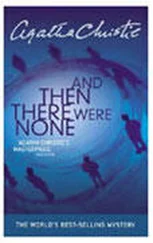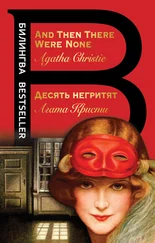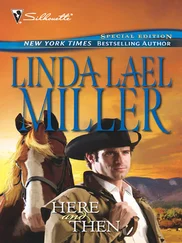Come the wedding day and, by God, Joan came. She lasted through the ceremony, and for about a half hour more before she had to leave. I kissed her goodbye and said I’d call the next day. When I did, George picked up the phone and told me Joan was really too tired to speak. It’s strange how a voice changes at such a time – it was clear that Joan was too weak – that I had said my last goodbye to her. It was a few days after that that George called to tell me she had gone. She had always been so innately strong, I never expected her to die so soon. But then even when someone is very ill, one does not expect it. There is no way to prepare yourself for disaster.
I had remembered her telling me she wanted friends to gather around her pool – raise a glass of wine, eat the snacks that she had listed in her will along with the above instructions, but I had to block it from my mind. Unhappily I couldn’t be at the pool gathering as I had work in New York. However, we did share our thoughts and feelings for Joan in my apartment at roughly the same hour as the gathering in California. A fond farewell to a remarkable woman and a wonderful friend.
A fter all the sadness, suddenly , at the end of 2001, something surprising and positive happened: I was offered a part in Lars von Trier’s movie, Dogville . The offer came from left field and I was thrilled. Lars had made a great movie, Breaking the Wave . He was an original, unpredictable director so, although my part in the movie was small, I said yes because of him.
Again it was an ensemble piece, though the star was Nicole Kidman. In addition to the appeal of working with Lars, I was attracted to it being an international cast headed by Nicole: Ben Gazzara and James Caan – both of whom I had known and liked before – Blair Brown – a great girl, lovely and so talented – Stellan Skaargard, that marvelous actor whose work I had seen in Breaking the Waves and who I got to know quite well and like enormously, and Siobhan Fallon – a funny, funny woman who was feeding a newborn baby and two of her other young children before the shooting day even started. How she did it, I’ll never know. So good things came out of that small part. Nicole and I became fast friends. She is not only beautiful – which she is to the extreme – but she is very smart, very professional and a first-class actress of broad scope.
I was fascinated to see the way Lars von Trier worked. I had envisioned him to be a very big man, tall and husky and somewhere in his late fifties. I couldn’t have been more wrong. Blair Brown and I, having been on the same flight from New York, were met by the producer, Vibeke Windelov, upon our arrival in Sweden. She turned out to be a big plus from day one and all through the making of the film and after – a really terrific woman who I have tremendous affection for. She is smart, original and fun. Not many producers are fun. She is. We were taken to what was to be our home for the next six weeks or more in Trollhattan and on to the dining room for lunch. After a while, a man appeared in the room with a smile on his face and a small stuffed moose in his hand. He was of medium height and looked to be in his early forties. He was Lars von Trier. The direct opposite of my imaginings. He handed me the moose – named Oliver (I know not why) – and sat him on the television in my bedroom living quarters. He still sits on my bedroom television at home so in a way I see him every day and Lars remains in my mind.
Working with the unknown is amazement, amusement and angst. At least for me. And Lars’s method involves an actor more or less forgetting what movies have taught him throughout his career. With Lars, you don’t have to worry about hitting the marks, you can change the dialogue and, in this case, the set was not a set but a floor with the town of Dogville drawn on it. We were shown where the doors and windows of our individual spaces were. That was so we didn’t walk through a wall that wasn’t there or jump out of a window, which I sometimes felt like doing in the confusion and frustration of forgetting it was a window. My character had this small shop where I sold potatoes and apples and some cleaning materials and I was famous for my gooseberry pies. Supposedly (although I never felt that way) I was the head of the town of Dogville, controlling all who lived there. That was the way it was presented to me. I was the only one with a door to leave and enter my shop. I had a collection of miniature figurines God knows from what country or how I came upon them. The Kidman character takes a fancy to them and those tiny creatures become one of the central parts of the story.
Lars had a humongous camera harness that weighed more than he did – and that he carried on his back and shoulders as he was photographing the scenes. He was in control – complete control – of all of us. From my point of view, as there were no walls, when the camera was photographing a scene at one end of the set, my shop, being in a direct line at the other end, might have been in camera range. That, in turn, meant there was a very good chance that I would be in the shot. Which, once again, meant that I had to be in character at all times just in case there was even a shadow of me in view.
As you might imagine, working that way took some getting used to. I’m not sure I ever really did get used to it, but I tried. I wanted adventure – a new experience – and I got it. I wanted to see how a super-talented director worked in this modern age – and I did. I’d worked with the one director I considered to be close to genius status, John Huston. The great thing about him was that he always listened to your doubts, ideas, anything, and you could always speak to him. Lars was a horse of an entirely different color. He spoke English fluently but he was not easy to communicate with during shooting hours. He was totally focused on his work and the technical problems he had to deal with while setting up the scene, all the while carrying this enormous harness and camera.
The time spent in Sweden was difficult for me as I was away from my little Sophie. I had become very attached to her, as is my wont with all the dogs I have had. With her it was even more so because, being so small, she snuggles. And I love that. She can snuggle in a way that a big dog can’t. I called the trainer, who was keeping her while I was away, to see how she was – did she miss me? The trainer said she was very happy, whereupon my voice dropped. She continued with, ‘You don’t want her to be sad, do you?’ My retort was, ‘Yes, a little bit. Why should I be the only one who is sad?’ Crazy, right? And yet…
Time passed and the cast all became closer – it was like boarding school, in a way. Meeting for dinner every night and sometimes for breakfast at 6:00 a.m. and for lunch on the stage next to our set. We were lucky to have such a compatible group. Movies on location have similar happenings. Come to think of it, most locations when isolated closely resemble one another. If the location is a city, you are lucky – there is other life present and available. People fall into groups – usually two to four. There is almost always one romance or two, or more depending on the obvious. Some relationships end with the last shot of the day or the closing night party. Amazingly some go further, even moving toward permanence. I was taught by Bogie (so much in my life goes back to him) never to mix business with pleasure. Let your status be known subtly from day one – not available. Unless, of course, you are. I’ve been involved with co-workers in the past and have found it is always a mistake. In any case, the question never arose. Different generations – different languages – different ways of expressing oneself – definitely different senses of humor (or lack thereof).
Читать дальше












